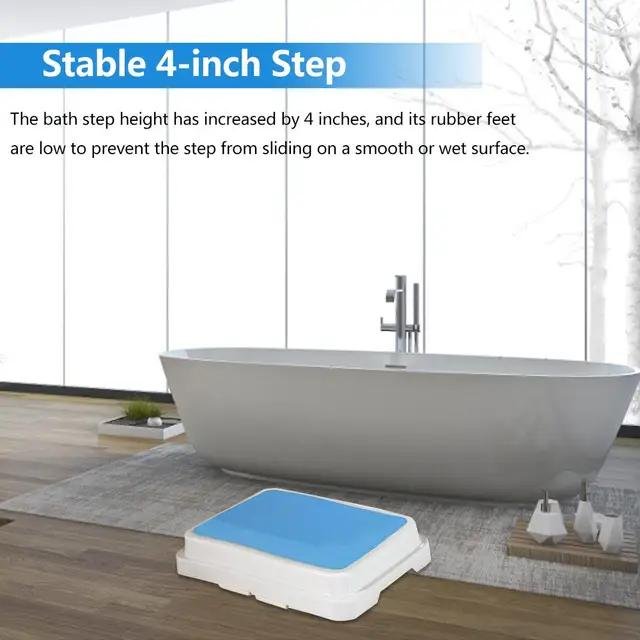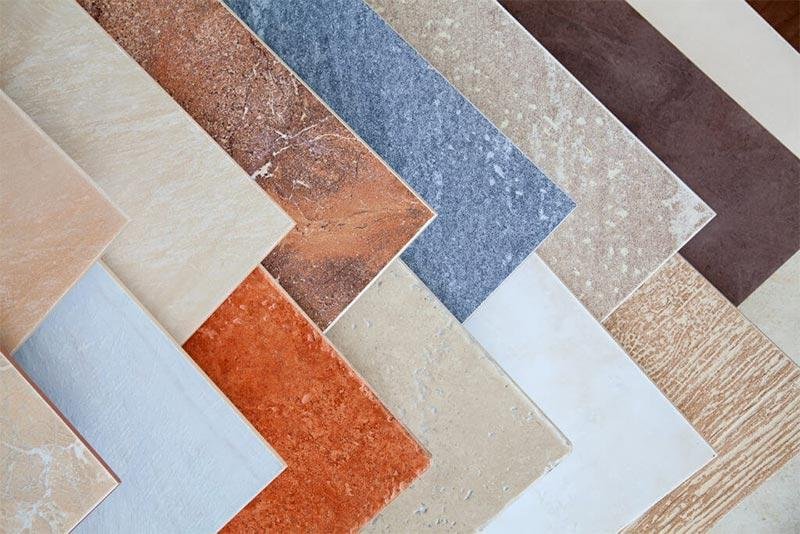
Why My Bathroom Floor Is Raised: Unveiling the Mysteries Beneath the Surface
Have you ever wondered about the stories that lie beneath your feet? The bathroom floor, often overlooked in the grand design of our homes, can be a surprising canvas of architectural choices and practical necessities. You might find yourself standing on a raised floor, puzzled by its presence. Is it a quirky design feature or a practical solution to an underlying issue? In this article, we will explore the reasons behind raised bathroom floors, delving into the secrets of plumbing, moisture management, and even aesthetic considerations. Join us as we lift the veil on this often-ignored element of home design, uncovering the rationale and benefits that may lie beneath your very own tiles.
Table of Contents
- Exploring the Mystery of a Raised Bathroom Floor
- Common Causes Behind Elevated Bathroom Surfaces
- Impact of Flooring Materials on Height Differences
- Effective Solutions for Addressing Height Discrepancies
- Q&A
- The Way Forward

Exploring the Mystery of a Raised Bathroom Floor
A raised bathroom floor can leave many homeowners puzzled, with its unusual elevation often leading to questions about its origin and functionality. Several factors could contribute to this unexpected feature, each with its own set of implications. Here are some potential reasons:
- Plumbing Solutions: A raised floor may be designed to accommodate plumbing systems, such as drains or pipes, which need to be elevated to maintain proper drainage.
- Moisture Management: In certain climates, a raised floor can help to prevent water damage by allowing air circulation underneath, reducing the risk of mold and mildew.
- Aesthetic Design: Sometimes, it’s simply a stylistic choice, providing a unique design element that adds character to the space.
Understanding the implication of a raised floor also involves considering how it affects your overall bathroom layout. While this feature can create interesting design opportunities, it can also pose challenges:
| Advantages | Disadvantages |
|---|---|
| Better drainage | Potential tripping hazard |
| Improved ventilation | Complicated installation |
| Unique design options | Heightened maintenance needs |

Common Causes Behind Elevated Bathroom Surfaces
Understanding the reasons behind raised bathroom surfaces can help you address potential issues before they escalate. One common cause is moisture accumulation, which might occur due to inadequate waterproofing or poor drainage systems. Over time, water can seep into the flooring materials, causing swelling and buckling. Additionally, improper installation of tiles can lead to uneven surfaces. If the underlying substrate was not correctly leveled before laying the tiles, you might notice some areas appearing higher than others.
Another significant factor to consider is pest infestation. Certain pests, such as termites or carpenter ants, can compromise the structural integrity of your flooring. They tend to thrive in damp environments, causing wood to warp and rise as they tunnel through it. Furthermore, foundation issues can create gaps or shifts in the flooring. When the foundation settles or if the soil beneath it erodes, this instability can lead to visible elevation in your bathroom’s surfaces. Recognizing these common causes early can save you time and money on further repairs.

Impact of Flooring Materials on Height Differences
The choice of flooring materials plays a pivotal role in creating variations in height across your bathroom space. Different materials have distinct properties that can influence how they are laid and how they settle over time. For instance, ceramic tiles are known for their durability and often require a thicker underlayment, which can elevate the finished surface compared to vinyl flooring, known for its thinner profile and ease of installation. Additionally, certain materials like natural stone can create height differences due to the need for leveling, as they can be uneven and require extra work to ensure a flat surface.
Moreover, the layering of flooring materials may contribute to the overall elevation. A floor constructed with a subfloor, followed by an underlayment, and then finished with a decorative layer can add significant height. This is often seen in luxury vinyl planks or engineered hardwood, where each layer is essential for comfort and performance, yet raises the floor level. Understanding how each flooring option interacts with the bathroom’s structural elements is key to solving height discrepancies, and it can help you make informed decisions when planning your designs or renovations. Here’s a simple comparison of common flooring materials and their typical installation heights:
| Flooring Material | Typical Height (inches) |
|---|---|
| Ceramic Tile | 0.5 – 1 |
| Vinyl Flooring | 0.25 – 0.5 |
| Natural Stone | 1 – 1.5 |
| Engineered Hardwood | 0.5 - 1 |

Effective Solutions for Addressing Height Discrepancies
Addressing height discrepancies in your bathroom can be a complex task, but there are several effective solutions to consider. One common cause of a raised floor is improperly installed flooring materials, creating an uneven surface. To remedy this, you can opt for self-leveling compounds to even out the discrepancies before applying any finishing layers. Additionally, investigating whether the subfloor is level is crucial, as it can reveal underlying problems that need addressing before you proceed with further installations. Here are some key methods to consider:
- Use Shims: In certain cases, shimming can help raise or lower specific areas.
- Install a New Subfloor: Replacing the subfloor can provide a fresh, level surface.
- Consult a Professional: When in doubt, hiring a contractor can ensure the job is done right.
Furthermore, if your problem arises from plumbing issues or drainage concerns, it’s vital to get to the root of the issue. Inefficient drainage can lead to accumulation of water, which may alter the floor’s elevation over time. Addressing this might involve re-routing pipes or installing shower pans that direct water away from the floor. Below is a brief comparison of potential solutions:
| Solution | Pros | Cons |
|---|---|---|
| Self-Leveling Compound | Easy application, smooth surface | Time to cure required |
| New Subfloor | Long-term fix, ensures stability | Costs can add up |
| Professional Inspection | Expert assessment, saves time | Service fees, potential for upsells |
Q&A
Q&A: Why Is My Bathroom Floor Raised?
Q1: What might cause a bathroom floor to be raised?
A1: A raised bathroom floor can result from various factors. Commonly, it could be due to plumbing installations, where the floor was elevated to accommodate pipes beneath. Sometimes, it’s to address drainage issues, ensuring proper water flow away from fixtures. Additionally, if your home underwent renovations, this could have resulted in uneven floor levels, intentionally or unintentionally.
Q2: Is it a design choice?
A2: Absolutely! In some cases, a raised floor is a deliberate design element. It can create visually distinct zones within a space, add depth, and even provide a convenient step-up for showers or bathtubs. It’s a stylistic choice often employed to enhance aesthetics while also improving functionality.
Q3: Could the raised floor be a sign of structural issues?
A3: It’s possible. If the height difference seems excessive or was not intended, it could indicate problems such as settling foundations or structural instability. If you notice cracks, uneven floors throughout your home, or other symptoms, it’s wise to consult a professional to ensure your home is safe.
Q4: How do I know if the raised floor is a problem?
A4: A raised floor isn’t inherently problematic, but you should look for warning signs. If you observe persistent water pooling, excessive creaking sounds, or shifting tiles, these could indicate underlying issues. If the raised area is accompanied by musty odors or visible dampness, consider investigating further.
Q5: What can I do about a raised bathroom floor?
A5: If you’re content with the height but want to update your space, consider tiles or flooring that complement the elevation. If the height is problematic—especially if it presents a trip hazard—there are solutions like installing wood or laminate flooring that can provide a more even surface or, if needed, enlisting a contractor for a more extensive fix.
Q6: Can I simply lower the floor?
A6: Lowering the floor is possible but not a trivial task. It typically involves significant alterations to plumbing and foundational structures. If the raised floor is integral to your plumbing system or overall home structure, it’s advisable to consult a professional before making any renovations.
Q7: What if I like the raised floor?
A7: If you appreciate the raised floor, embrace it! You can enhance its appeal with stylish rugs, or visual elements like a step-up for a chic bathtub or shower. Highlighted lighting can create an inviting ambiance, making your raised floor a distinctive feature of your bathroom design.
Q8: Are there benefits to having a raised bathroom floor?
A8: Definitely! A raised floor can provide benefits such as improved drainage in wet areas, easier access to plumbing for repairs, and effective thermal insulation if designed properly. Plus, it can serve as an elegant threshold that separates your bathroom from other spaces in a seamless way.
Q9: Is there anything else I should consider?
A9: When dealing with a raised bathroom floor, always consider accessibility. Make sure that the height doesn’t hinder mobility for you or your guests. Evaluating your bathroom’s layout and purpose will ensure the raised floor meets your needs rather than complicating them.
With these insights, understanding your raised bathroom floor should feel less like a mystery and more like a topic worth discussing! Whether it’s praise or concern, acknowledging its presence can lead to creating a bathroom that works for you.
The Way Forward
the reasons behind a raised bathroom floor are often as varied as the homes they inhabit, blending practical concerns with aesthetic choices. Whether it’s the result of plumbing modifications, water drainage needs, or simply a stylistic decision, understanding the ‘why’ behind your bathroom’s elevation can transform a puzzling feature into a point of intrigue. As you step onto that slightly elevated surface, consider the craftsmanship and thought involved in creating a space that not only serves a functional purpose but also contributes to the overall harmony of your home. So, the next time you find yourself pondering the quirks of your bathroom, remember: every detail tells a story—sometimes, it’s just a little off the ground.

